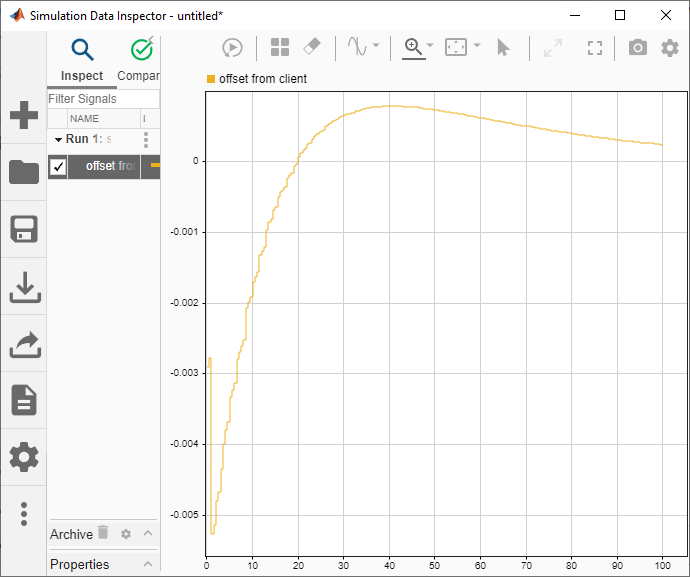IEEE 1588 Read Parameter
Output Precision Time Protocol status parameter values such as target computer system time, calendar time, and delays
Libraries:
Simulink Real-Time /
PTP
Description
The IEEE 1588 Read Parameter block reads the parameter that you select and send its value to the block output. The block label changes based on the parameter that you select. You can use the IEEE 1588 Read Parameter block to read the Speedgoat® target computer system time even without a PTP process running.
Note
The IEEE 1588 Read Parameter block outputs the system time,
which is updated every 1 ms. This output is independent of the sample time
of the block and the nanosecond precision of the block output. For more
information, see clock_gettime() in the QNX® Neutrino® documentation.
Examples
Ports
Output
Parameters
Extended Capabilities
Version History
Introduced in R2020b
